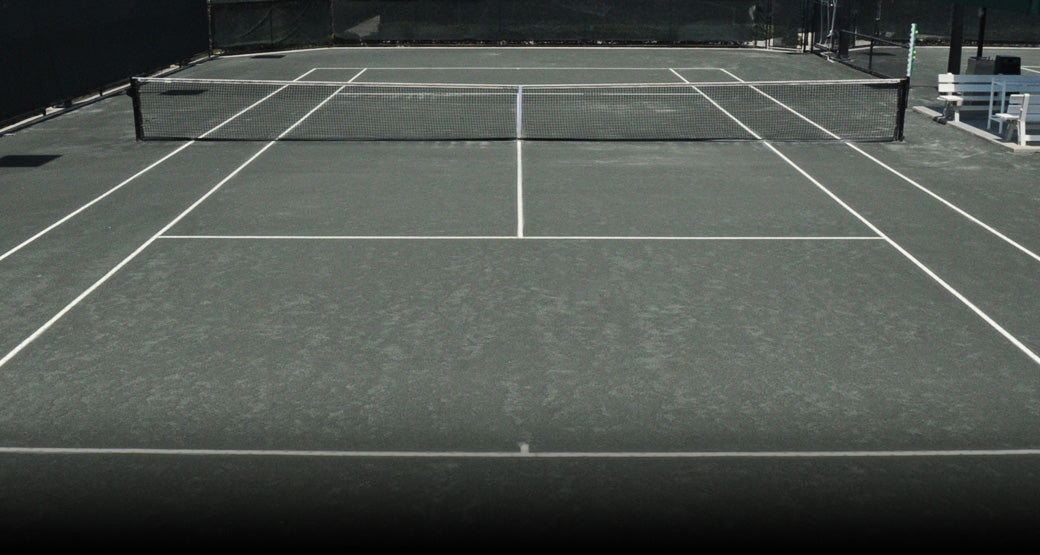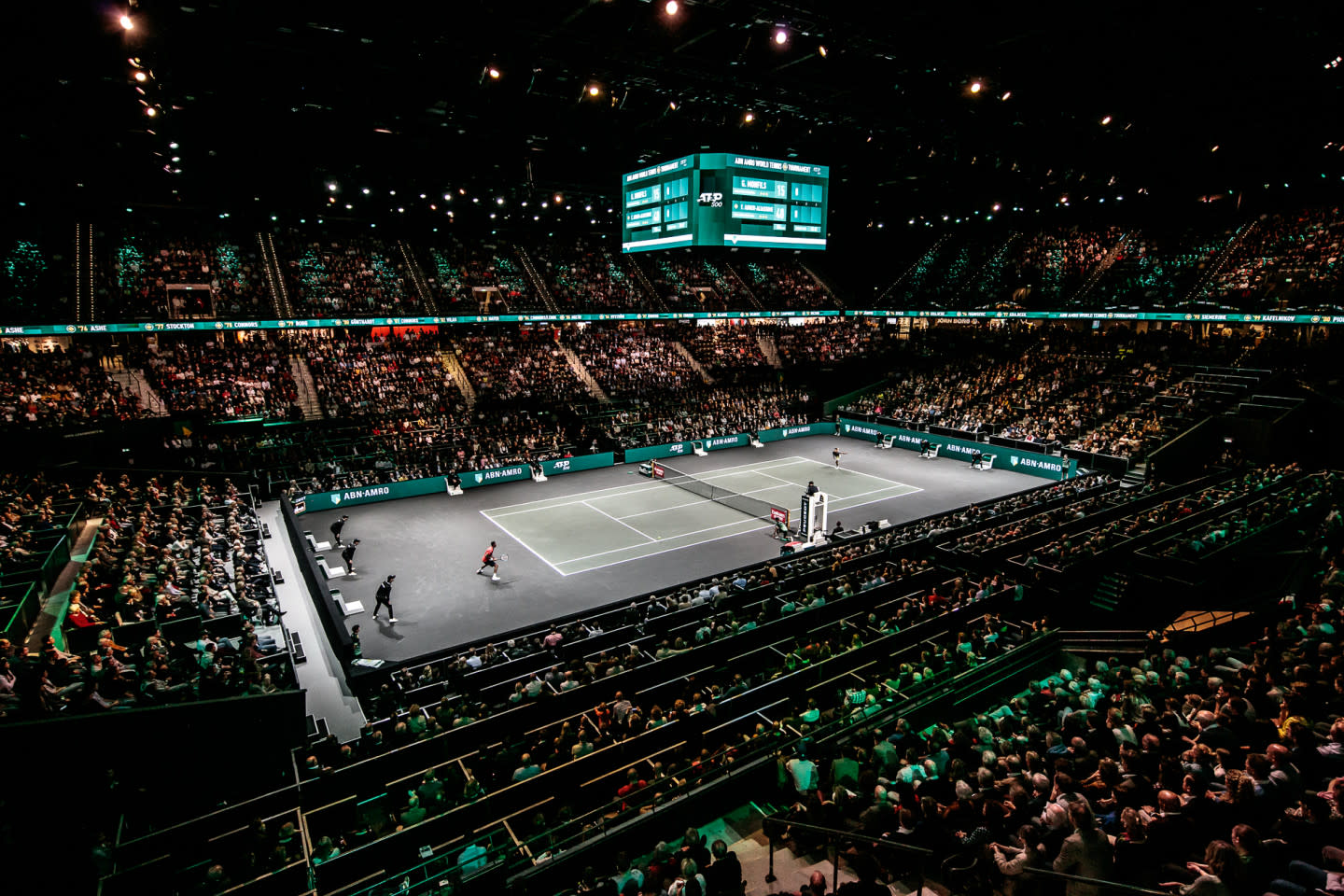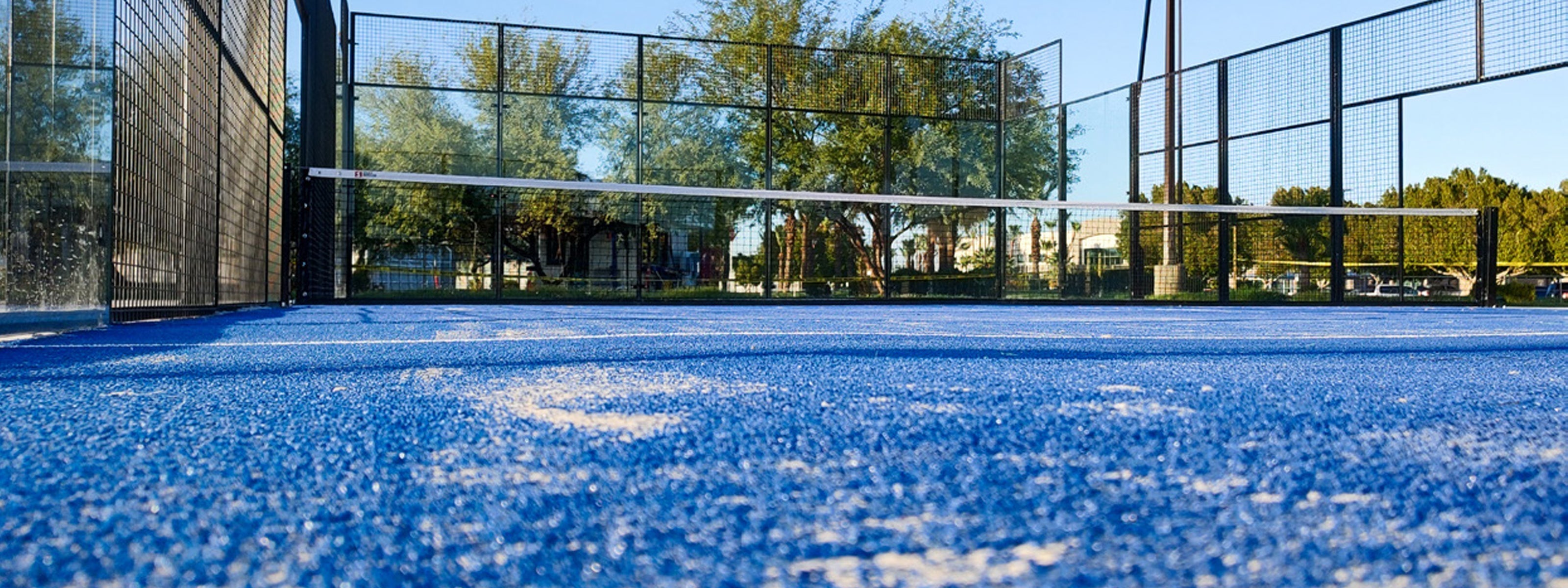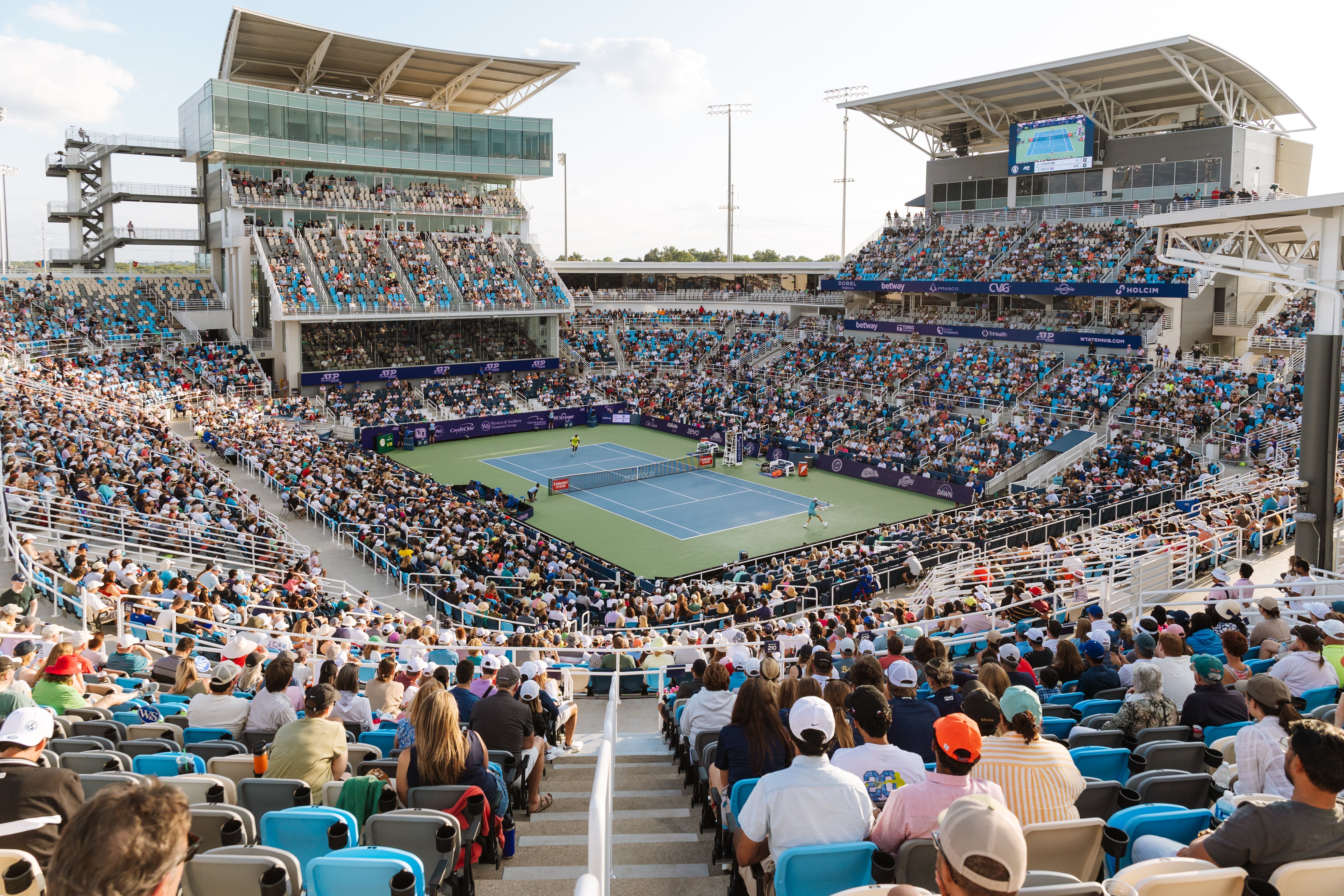
Indoor facilities offer a year-round opportunity to cater to a tennis population that likes the soft sliding surface characteristics of a clay court. The demand for play keeps some of these facilities open from 6:00 am until midnight. To satisfy this kind of demand, you want to build the optimum environment up-front to maximize the use of your facility over the long run. Should you build HydroCourt or conventional Har-Tru courts? A brief comparison of both courts should help you in making the best decision.
To begin, you want tennis players to be comfortable. For both types of courts, a heating, ventilation, and air conditioning (HVAC) system capable of changing the air within the structure 1-4 times per hour is necessary. The winter temperature should be maintained at 55 to 62 degrees Fahrenheit. Maintain relative humidity between 55% & 60%. Achieving the optimum relative humidity could be less expensive for a conventional Har-Tru court than for HydroCourt.
Because of the unique water reservoir beneath the surface, HydroCourt provides a more consistent playing surface throughout the day. The benefits are a surface requiring less daily maintenance yielding more court reservation hours. The up-front cost for HydroCourt is in building a more robust air handling system in terms of humidity control. On the other hand, conventional Har-Tru courts require more daily maintenance in terms of closing and watering the courts. This is where you lose available reservation hours daily.
In terms of surface maintenance, the daily and monthly routines are similar. The courts are raked or brushed daily. Monthly the courts require a light scraping to remove the loose worn particles, followed by a light application of Coarse Blend material. Coarse Blend is the largest particles of the Har-Tru mix. Annual maintenance entails patching and re-dressing for both types of courts.
Finally, HydroCourt could be 20%-25% more expensive to build and require a more robust HVAC system to meet the environmental parameters for player comfort. Conventional Har-Tru courts require more daily maintenance over the long run, costing on average the loss of 1 reservation hour per day. The long-run play for every facility should be to provide as many reservation hours as possible on the most consistent playing surface in an ideal player environment.



